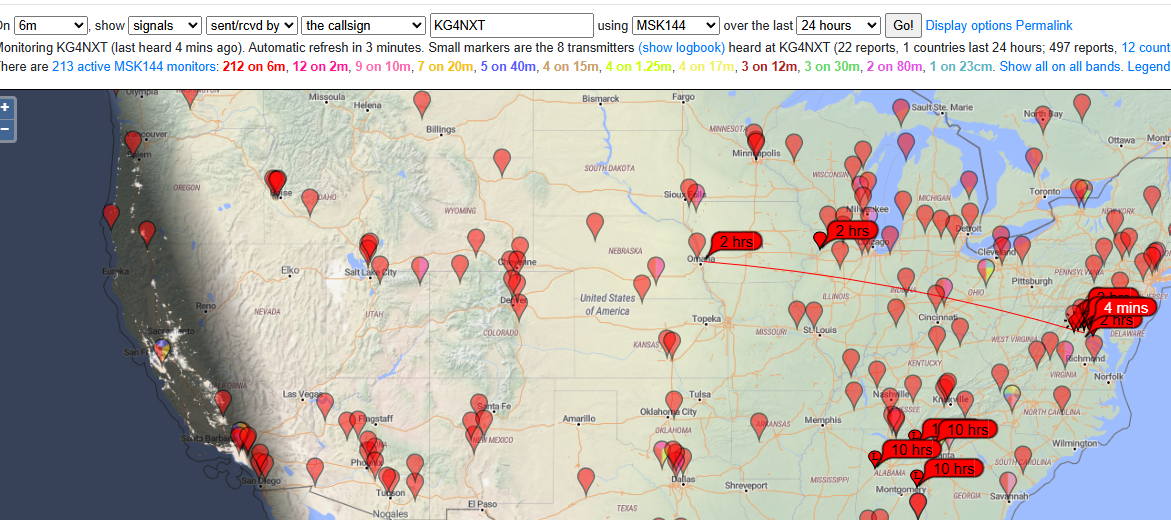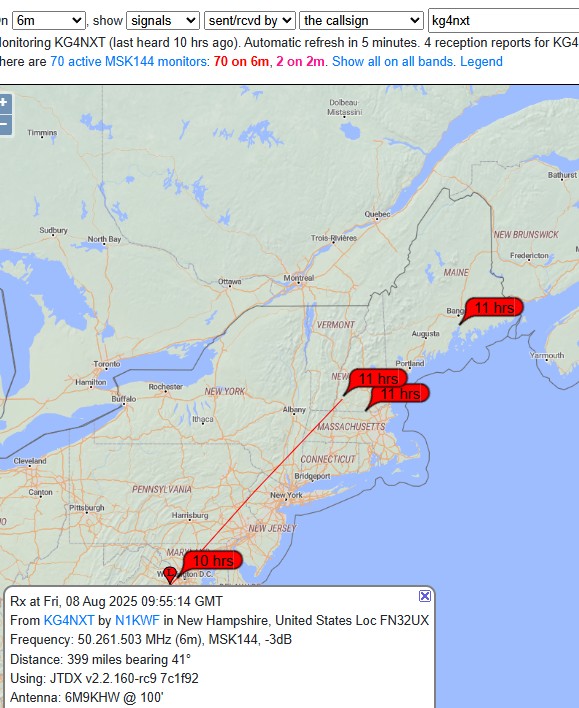I was first licensed in 1964 and just got my first Meteor Scatter contact. Thanks to Bruce, KN4GDX and Rich, K1HTV, for their help.
Most radio skip occurs when our signal bounces off of an ionized layer of the ionosphere. That layer has been ionized by the sun. For meteor scatter, the ionization is provided by a meteor that is burning up in the atmosphere. That means the ionization is not up there for long as that meteor burns up.
On the evening of August 10, 2025, I made my first meteor contacts. I used the MSK144 mode of WSJT-X on 6 meters – 50.260 MHz bouncing off of the Perseid meteors.
Here is Rich’s description of MSK144:
“The Perseid meteor shower is a 24 hour a day shower. Unlike many other showers, it does not set. The problem is that the guys playing with meteors tend to operate in the late evening hours and then again at dawn. In my 60 plus years of doing meteor showers, I’ve made 2-way Perseid contacts at all hours of the day. In the old days we would set up skeds (scheduled) using USnail mail. The skeds were first on CW, but when SSB came around, we found that mode to be a better way to take advantage of the short bursts. Then in 2001, Joe Taylor, K1JT, introduced MSK441 as a component of his WSJT program. In 2001, the name was changed to MSK144 when it was added to the WSJT-X program. With MSK144 being far superior to SSB, almost all M/S work is now done using this digital mode. It only takes 72 milliseconds to send an MSK144 packet containing calls and grids, or calls and reports, or the calls and rogers, or calls and 73 messages. It’s a lot faster than SSB :-). ”
The stations I worked were AB4GA and WA4CQG, both in Alabama. I was also heard in Iowa and Illinois. see below in PSK Reporter:

If you have WSJT-X working and your radio will do 6 or 10 meters, you are almost there. Select MSK144 as the mode and 6 meters as the band – frequency is 50.260 for 6 meters and 28.145 for 10 meters. Select odd (meaning uncheck the even box). If you log to the internet on WSJT-X, the data will be used for scientific study. If nothing is happening, let your radio go for overnight and see what you hear. You may have to adjust your sleep setting on your computer so it stays awake.
Most people are on meteor scatter at 6 AM plus or minus 3 hours. As Rich already said, the Perseid meteors can be worked all day. I just made a meteor scatter contact with WU5X in Alabama around noon.
You may hear some local fellows on ground wave with MSK144 and work them, but that is not meteor scatter unless the station is between 400 and 1,200 miles from you.
The Perseids are expected to peak tonight August 11.

